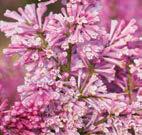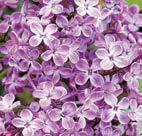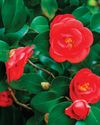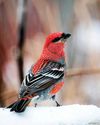يحاول ذهب - حر
THE LATEST IN Lilacs
April/May 2024
|Birds & Blooms
Learn about updated varieties of this timeless classic and how to take care of them

With the first mention of the lilac dating back to 1753, it's not surprising that the fragrant flowers are often considered old-fashioned-but that doesn't mean lilacs don't have modern appeal.
"Lilacs decorated the large estates of the founding fathers and have remained an American favorite for generations," says Melissa Finley, Thain curator of woody plants at New York Botanical Garden.

"For contemporary gardeners, lilacs are often associated with fond memories of mothers, grandmothers and aunts who grew these classic shrubs for their showstopping fragrance."
Get Growing
Whether you plant classic species like the common lilac or newer varieties like Pinktini lilac, choose a site with full sun and moist but well-draining soil; lilacs prefer a neutral or slightly alkaline soil pH. "A lilac in the right spot will require very little care in order to thrive," Melissa says.
Warmer winter conditions due to climate change could make it harder for traditional early-blooming lilacs to bloom in some areas, Melissa adds. Heat-tolerant varieties like Lilac Sunday, Betsy Ross and Old Glory are better adapted for warmer climates.

Scent-sational Blooms
هذه القصة من طبعة April/May 2024 من Birds & Blooms.
اشترك في Magzter GOLD للوصول إلى آلاف القصص المتميزة المنسقة، وأكثر من 9000 مجلة وصحيفة.
هل أنت مشترك بالفعل؟ تسجيل الدخول
المزيد من القصص من Birds & Blooms

Birds & Blooms
Ready to Fly
For birders, spring migration is something to look forward to and be celebrated, but how do birds know when it's time to begin their travels?
2 mins
December 2025 / January 2026

Birds & Blooms
COOL AS A Camellia
When temperatures drop, most plants wait out the chilly months, but camellias put on a show. Discover how to have these beauties thriving in your yard.
2 mins
December 2025 / January 2026

Birds & Blooms
Festive Feathers
Readers braved the winter chill to capture these snowy snapshots of the season's most beautiful birds
2 mins
December 2025 / January 2026

Birds & Blooms
Winter Gems
With raspberry-red feathers, pine grosbeaks cheer up chilly landscapes wherever they land
2 mins
December 2025 / January 2026

Birds & Blooms
the mysterious lives of NIGHTHAWKS
These creatures of contradiction aren't hawks and aren't the most active at night, but they are worth knowing
3 mins
December 2025 / January 2026

Birds & Blooms
Adventure Awaits
Pack your bags, get on board and find your next vacation destination in these captivating photos from far-flung travels
2 mins
December 2025 / January 2026

Birds & Blooms
It's All in the Needles
Get to know the greenery to identify these conifers
1 min
December 2025 / January 2026

Birds & Blooms
Christmas Tree Do's and Don'ts
These pro tips will help you get the most out of this classic holiday fixture
2 mins
December 2025 / January 2026

Birds & Blooms
Trailing Houseplants
Simple, easy-to-grow plants for hanging containers
3 mins
December 2025 / January 2026

Birds & Blooms
Better Off with Bats
Rethink the unsung heroes of the night and why you should support them
2 mins
October / November 2025
Listen
Translate
Change font size
